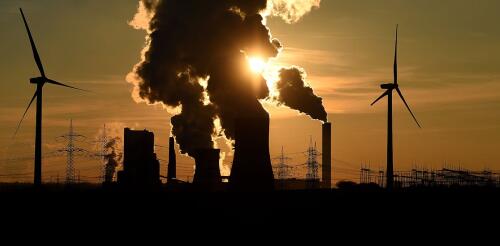Oil and gas industry
Earth Day is April 22, and climate activists around the world are planning rallies and other events to draw attention to the growing threats posed by climate change. Many of these demonstrations will focus on what humanity can do to stop fueling the damage. But while activists are amplifying the dire findings from scientists, you’ll likely see fossil fuel supporters attacking them on social media and TV. It’s easy to get caught up in the myths about climate activism, particularly in today’s polarized political environment. So, let’s take a moment to explore the truth about three of the big myths being told about climate activism and the climate movement today. Myth 1: Climate activists are just young people The media tends to focus most of its attention on young people in the climate movement, including those inspired by Greta Thunberg’s school strikes for climate, the international Fridays for Future, or the Sunrise Movement, which focuses on U....
Plastic pollution has spread to Earth’s farthest reaches, with widespread effects on wildlife, the environment and human health. To curb this problem, U.N. member countries are negotiating a global treaty to reduce plastic pollution, which they aim to complete by the end of 2024. That effort is well underway. In September 2023, the U.N. Environment Programme released the so-called zero draft – a first iteration of ideas and goals that emerged from the first two rounds of negotiations. And in November 2023, the Intergovernmental Negotiating Committee on Plastic Pollution met in Nairobi, Kenya, for the third negotiating round of a planned five sessions. Studies show that plastic causes harm in all stages of its life cycle, from production through use and disposal. Because the draft treaty includes provisions that address all of these phases, environmental advocates greeted it as a step in the right direction. The draft includes 13 provisions that address issues suc...
Leer en español. You’ve probably seen ads promoting gas and oil companies as the solutions to climate change. They’re meant to be inspiring and hopeful, with scenes of a green, clean future. But shiny ads are not all these companies do to protect their commercial interests in the face of a rapidly heating world. Most also provide financial support to industry groups that are spending hundreds of millions of dollars on political activities, often to thwart polices designed to slow climate change. For example, The New York Times recently reported on the Propane Education and Research Council’s attempts to derail efforts to electrify homes and buildings in New York, in part by committing nearly US$900,000 to the New York Propane Gas Association, which flooded social media with misleading information about energy-efficient heat pumps. The American Fuel and Petrochemical Manufacturers, which represents oil refiners and petrochemical firms, has spent millions...
What’s the cheapest, quickest way to reduce climate change without roiling the economy? In the United States, it may be by reducing methane emissions from the oil and gas industry. Methane is the main component of natural gas, and it can leak anywhere along the supply chain, from the wellhead and processing plant, through pipelines and distribution lines, all the way to the burner of your home’s stove or furnace. Once it reaches the atmosphere, methane’s super heat-trapping properties render it a major agent of warming. Over 20 years, methane causes 85 times more warming than the same amount of carbon dioxide. But methane doesn’t stay in the atmosphere for long, so stopping methane leaks today can have a fast impact on lowering global temperatures. That’s one reason governments at the 2022 United Nations climate change conference in Egypt focused on methane as an easy win in the climate battle. So far, 150 countries, including the United States...
With the U.S. government promising over US$360 billion in clean energy incentives under the Inflation Reduction Act, energy companies are already lining up investments. It’s a huge opportunity, and analysts project that it could help slash U.S. greenhouse gas emissions by about 40% within the decade. But in conversations with energy industry leaders in recent months, we have heard that financial incentives alone aren’t enough to meet the nation’s goal of reaching net-zero emissions by 2050. In the view of some energy sector leaders, reaching net zero emissions will require more pressure from regulators and investors and accepting technologies that aren’t usually thought of as the best solutions to the climate crisis. ‘Net-zero,’ with natural gas In spring 2022, we facilitated a series of conversations at Penn State University around energy and climate with leaders at several major energy companies – including Shell USA, and electric u...




